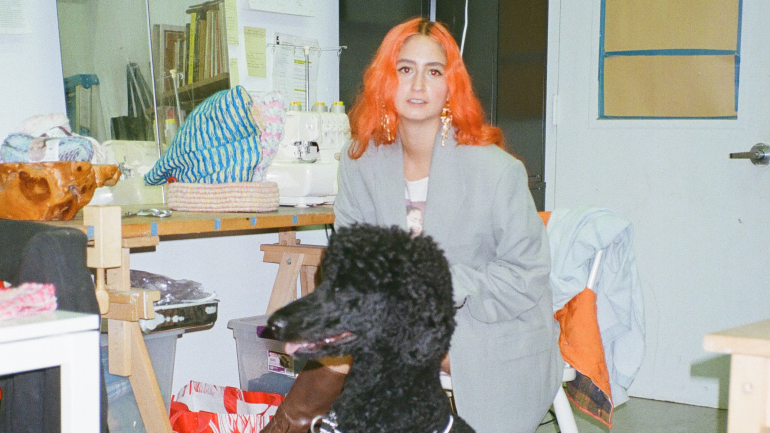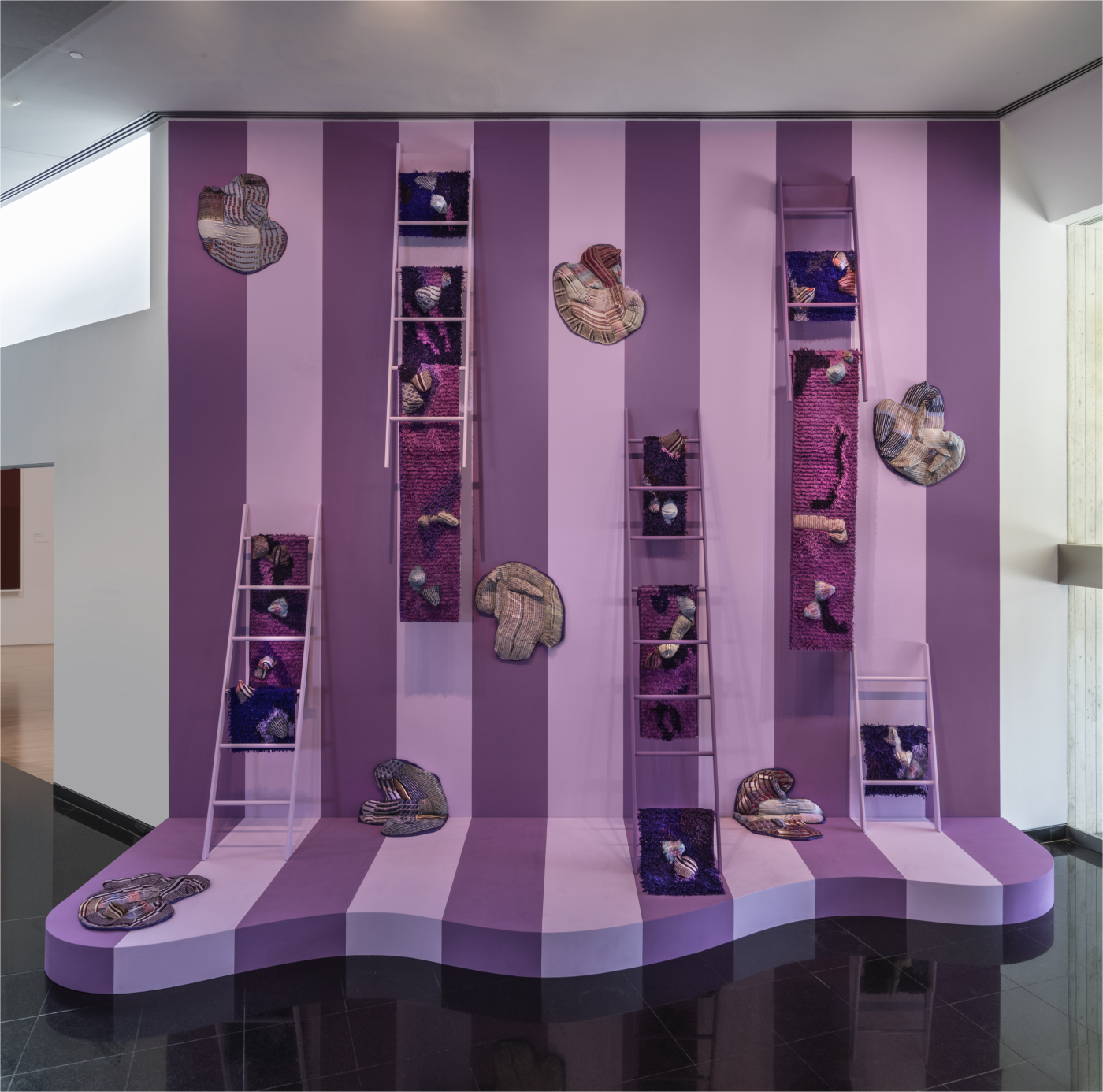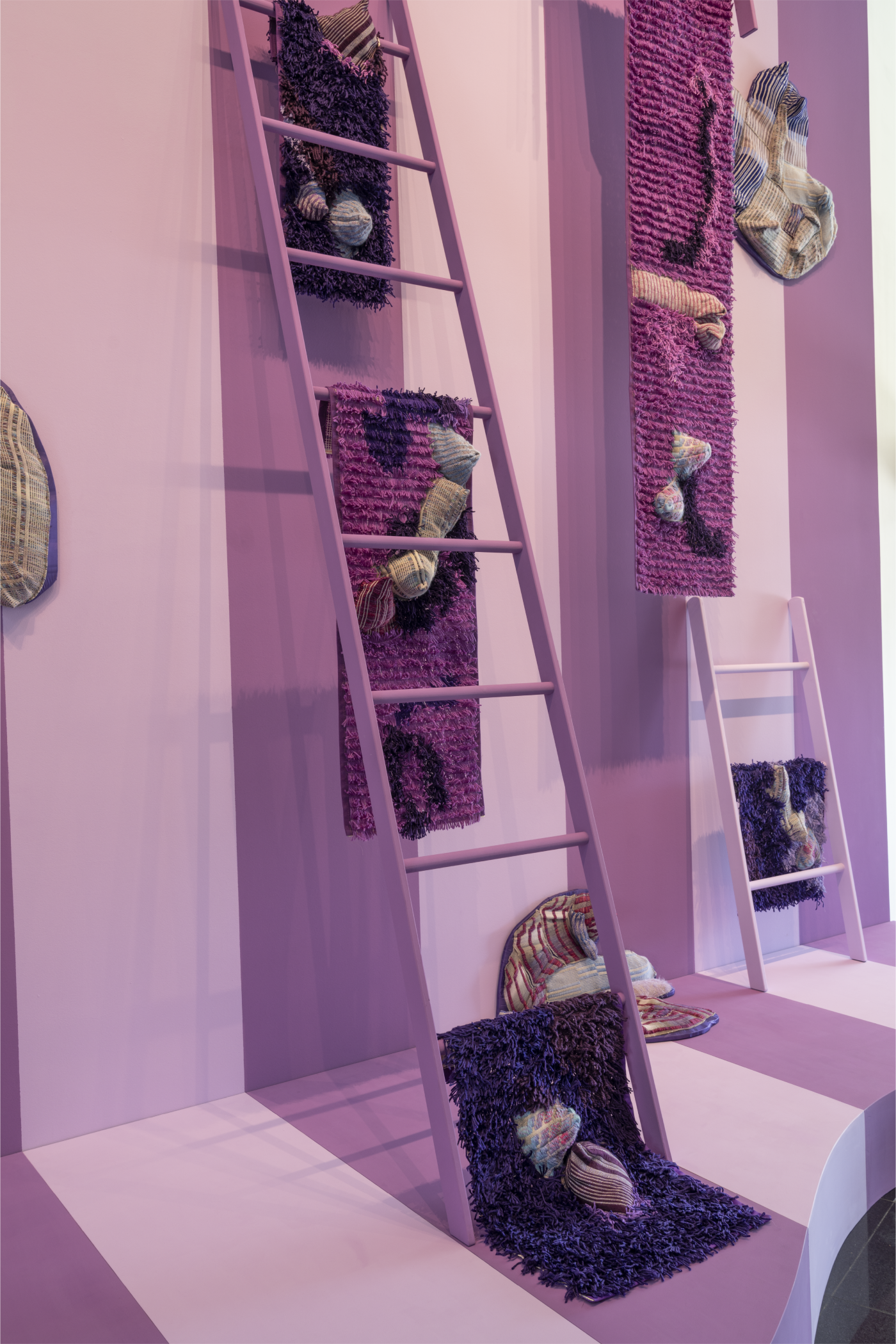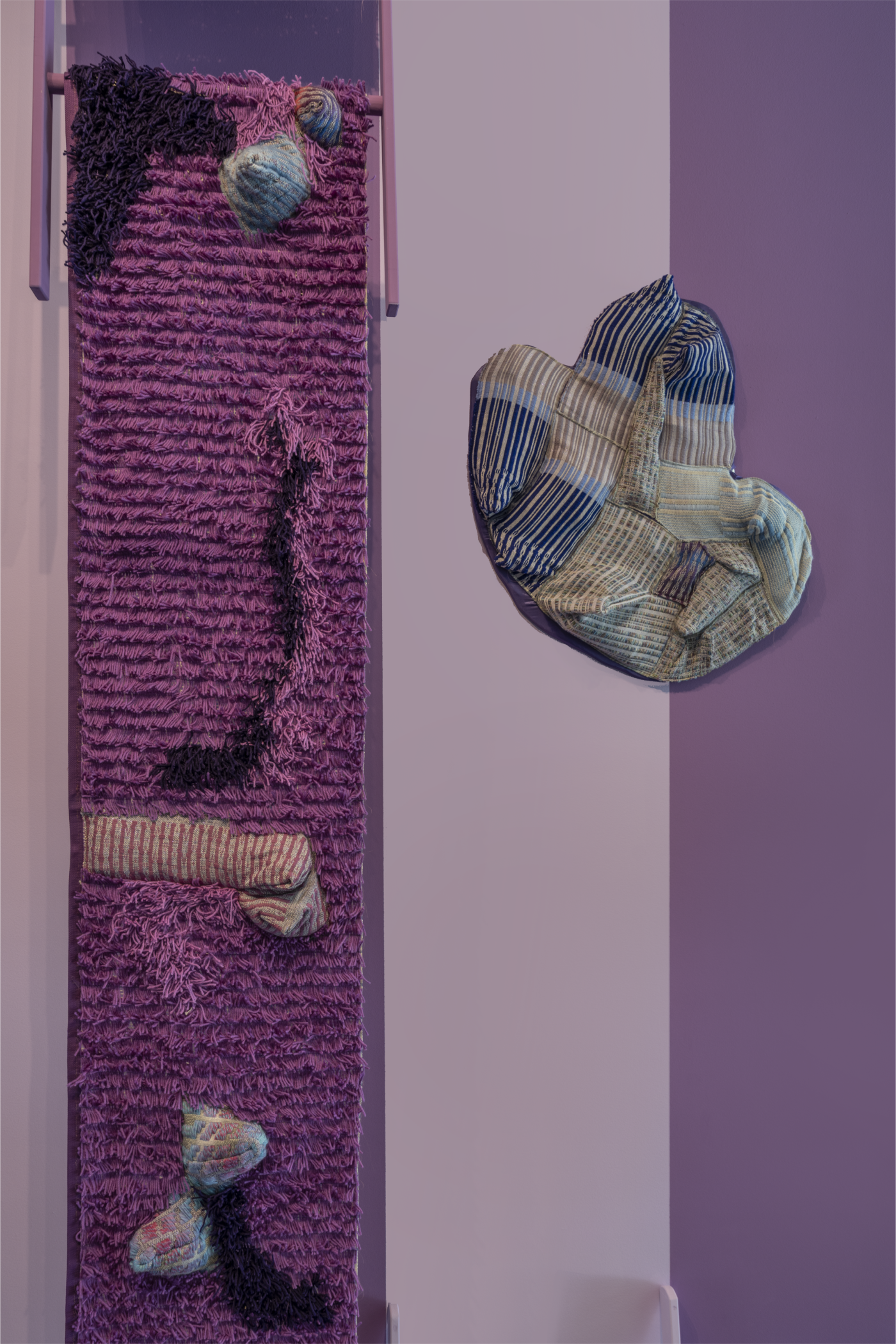The Queue: Sarah Zapata
The Queue: Sarah Zapata
Sarah Zapata dresses entire rooms in dazzling, colorful, handwoven textiles.
Sarah Zapata’s handwoven textiles engulf furniture, ladders, blocks, and walls in color and texture. The Brooklyn-based, queer, Peruvian American artist draws upon her identity in her vibrant work. Incorporating Peruvian craft traditions, symbols of outcasts and outsiders, historically gendered labor, her strict evangelical Christian upbringing, and queer history, she immerses the viewer in a kaleidoscopic, tactile environment. “When I was a kid, I had so little control over things in my life, but making things was a means of expression and accessing just a little bit of agency,” she says. Zapata is currently in residence at CALA Alliance in Phoenix, where she is preparing for an upcoming exhibition at Arizona State University Art Museum in 2024. So the roots be known, which Jon Spayde wrote about in Craft Happenings in the Fall 2023 issue of American Craft, is on view at the Kemper Museum of Contemporary Art in Kansas City, Missouri, until July 28, 2024.
How do you describe your work or practice in 50 words or less?
I like to think about how textiles speak to tradition and power structures and colonialism. Through installation, cloth is used to adorn the space to direct the body through it, rather than adorning the body.
Tell us about the first piece of textile art that captivated you. What about it drew you in?
Pincushion to Serve as Fetish by Dorothea Tanning, which I believe was on permanent view at the Dallas Museum of Art. I had a museum membership in high school, and this work has continued to stick in my mind. It’s a beautiful and strange work, but most importantly to me, it is sculpture.
You use a multitude of techniques and materials in your work. What are your favorites? What are the most challenging?
I think it depends on the stage of production as to which is my favorite. They all have moments of excitement and monotonality. Weaving continues to be the most dynamic—I feel like it truly is a life’s work investigating all that the loom can do.
What do you collect in your studio? What about at home?
I certainly collect yarn at my studio. Though I have so much of it, I can usually tell you the story of how I got it. At home, I collect anything that can be made into stuffing. I will do absolutely anything to save fabric from the trash.
Your current show, So the roots be known at the Kemper Museum of Contemporary Art in Kansas City, is rooted in that city’s history, specifically the lesbian community Womontown. Can you tell us about your research process for the project? What was the most surprising thing you found?
I had the pleasure of visiting the Gay and Lesbian Archive of Mid-America at UMKC, and it was really inspiring to have a peek into these people’s lives. Finding their planning documents for a visit to the March on Washington and seeing the AIDS Quilt was very exciting.
Which textile artists, exhibitions, or projects do you think the world should know about, and why?
There are so many textiles all around us, so maybe it’s about thinking about who made them and giving them a moment of gratitude and honor.









